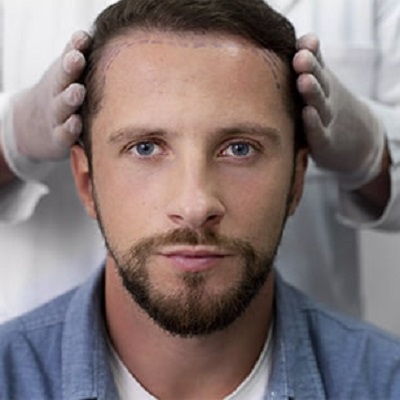Introduction
Hair loss can be a distressing experience, affecting self-esteem and overall quality of life. For many, hair restoration offers a viable solution. Among the various methods available, Follicular Unit Transplantation (FUT) stands out for its effectiveness in providing natural-looking results. Over the years, advancements in technology and techniques have significantly improved the FUT Hair Transplant. This article delves into the latest innovations in FUT hair transplant techniques, highlighting how they enhance outcomes, reduce recovery time, and improve patient satisfaction.
Understanding Follicular Unit Transplantation (FUT)
Before exploring the innovations, it is essential to understand what FUT entails. Follicular Unit Transplantation is a surgical technique that involves removing a strip of scalp from a donor site, typically at the back of the head, where hair is more resistant to balding. This strip is then dissected into individual follicular units, each containing one to four hair follicles. The surgeon then implants these units into the balding or thinning areas of the scalp.
While FUT has been a reliable method for hair restoration, the traditional approach often raised concerns regarding scarring, recovery time, and the overall aesthetic outcome. Recent innovations aim to address these issues while enhancing the efficiency and effectiveness of the procedure.
Advances in Surgical Techniques
1. Improved Donor Harvesting Methods
One of the significant innovations in FUT is the refinement of donor harvesting techniques. Surgeons are now employing advanced methods to minimize scalp tension during the excision process. Techniques such as trichophytic closure allow for a more precise alignment of the scalp edges, which not only reduces scarring but also promotes faster healing. This method enables hair to grow through the scar, making it less noticeable.
2. Enhanced Dissection Techniques
The dissection of follicular units from the harvested strip has seen considerable improvement. Surgeons are utilizing high-powered microscopes and specialized tools to enhance the precision of dissection. This careful approach reduces the risk of transecting hair follicles during the separation process, thereby increasing the overall yield of usable grafts. As a result, patients benefit from a higher density of transplanted hair, leading to more natural-looking results.
3. Optimized Graft Storage Solutions
Innovations in graft preservation have also emerged, addressing a critical aspect of hair transplantation: the survival rate of the transplanted follicles. Advanced storage solutions, such as hypothermic storage techniques, have been developed to maintain optimal conditions for grafts during the transplantation process. By keeping the grafts in an ideal temperature and nutrient-rich environment, the viability of the follicles is significantly enhanced, resulting in improved growth rates post-surgery.
Technological Innovations
1. Robot-Assisted FUT
The integration of robotics in hair transplantation has gained traction, offering precision and efficiency. Robot-assisted FUT systems can assist surgeons in the harvesting and placement of hair follicles. These systems utilize advanced imaging technology to identify optimal grafts and ensure accurate placement. As a result, robotic assistance can lead to improved graft survival rates and reduced overall surgery time, enhancing patient comfort and satisfaction.
2. 3D Imaging and Planning
Cutting-edge 3D imaging technology has revolutionized how surgeons plan and execute hair restoration procedures. By creating detailed 3D models of the patient’s scalp, surgeons can visualize the areas of hair loss and plan the transplant more effectively. This technology allows for a personalized approach, taking into account the patient's unique hair characteristics and growth patterns, which leads to more natural and aesthetically pleasing results.
3. Enhanced Anesthesia Techniques
Minimizing discomfort during the procedure is a priority for both patients and surgeons. Innovations in anesthesia delivery, such as the use of digital devices for local anesthesia administration, have made the process more efficient. These devices provide a more precise and controlled delivery of anesthesia, significantly reducing pain and anxiety for the patient, while also expediting the procedure.
Post-Operative Care and Recovery
1. Advanced Healing Technologies
The recovery phase following FUT is crucial for the success of the procedure. Recent advancements in post-operative care include the use of light therapy and PRP (Platelet-Rich Plasma) treatments. Light therapy has been shown to promote healing and reduce inflammation, while PRP treatment can enhance hair growth by utilizing the patient’s own growth factors. Incorporating these technologies into the post-operative care regimen can lead to faster recovery and better overall results.
2. Personalized Aftercare Plans
Understanding that each patient's recovery journey is unique, practitioners are now focusing on personalized aftercare plans. These plans may include tailored advice on wound care, medications, and follow-up treatments. By addressing individual patient needs and concerns, practitioners can help ensure optimal healing and hair growth.
Conclusion
Innovations in Follicular Unit Transplantation techniques have significantly transformed the landscape of hair restoration. With advancements in surgical methods, technological integration, and post-operative care, FUT has become more efficient, effective, and patient-friendly. As these techniques continue to evolve, they promise even better outcomes for individuals seeking to restore their hair and regain their confidence. For anyone considering hair restoration, understanding these innovations can empower them to make informed decisions, ultimately leading to successful and satisfying results.





Comments